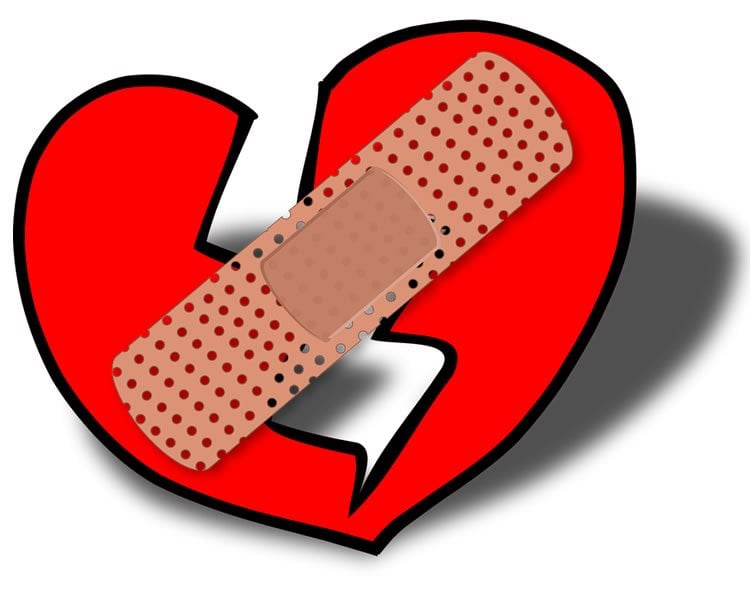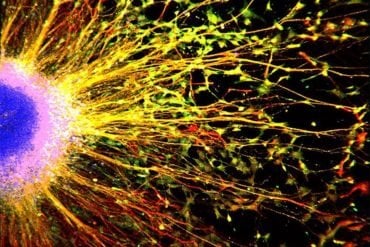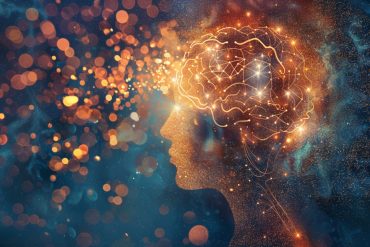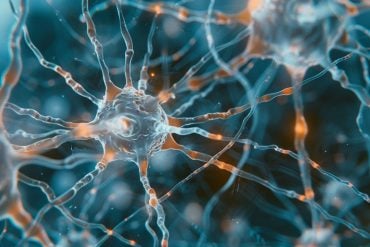Summary: A new neuroimaging study finds the placebo effect can help to lessen the impact of the emotional pain from romantic rejection.
Source: University of Colorado at Boulder.
Feeling heartbroken from a recent breakup? Just believing you’re doing something to help yourself get over your ex can influence brain regions associated with emotional regulation and lessen the perception of pain.
That’s the takeaway from a new University of Colorado Boulder study that measured the neurological and behavioral impacts the placebo effect had on a group of recently broken-hearted volunteers.
“Breaking up with a partner is one of the most emotionally negative experiences a person can have, and it can be an important trigger for developing psychological problems,” said first author and postdoctoral research associate Leonie Koban, noting that such social pain is associated with a 20-fold higher risk of developing depression in the coming year. “In our study, we found a placebo can have quite strong effects on reducing the intensity of social pain.”
For decades, research has shown that placebos – sham treatments with no active ingredients – can measurably ease pain, Parkinson’s disease and other physical ailments.
The new study, published in March in the Journal of Neuroscience, is the first to measure placebos’ impact on emotional pain from romantic rejection.
Researchers recruited 40 volunteers who had experienced an “unwanted romantic breakup” in the past six months. They were asked to bring a photo of their ex and a photo of a same-gendered good friend to a brain-imaging lab.
Inside a functional magnetic resonance imaging (fMRI) machine, the participants were shown images of their former partner and asked to recall the breakup. Then they were shown images of their friend. They were also subjected to physical pain (a hot stimulus on their left forearm).
As these stimuli were alternately repeated, the subjects rated how they felt on a scale of 1 (very bad) to 5 (very good). Meanwhile, the fMRI machine tracked their brain activity.
While not identical, the regions that lit up during physical and emotional pain were similar.
This finding alone sends an important message to the heartbroken, said senior author Tor Wager, a professor of psychology and neuroscience at CU Boulder: “Know that your pain is real – neuro-chemically real.”
The subjects were then taken out of the machine and given a nasal spray. Half were told it was a “powerful analgesic effective in reducing emotional pain.” Half were told it was a simple saline solution.
Back inside the machine, the subjects were again shown images of their ex and subjected to pain. The placebo group not only felt less physical pain and felt better emotionally, but their brain responded differently when shown the ex.
Activity in the brain’s dorsolateral prefrontal cortex – an area involved with modulating emotions – increased sharply. Across the brain, areas associated with rejection quieted. Notably, after the placebo, when participants felt the best they also showed increased activity in an area of the midbrain called the periaqueductal gray (PAG). The PAG plays a key role in modulating levels of painkilling brain chemicals, or opioids, and feel-good neurotransmitters like dopamine.
While the study did not look specifically at whether the placebo prompted the release of such chemicals, the authors suspect this could be what’s happening.
“The current view is that you have positive expectations and they influence activity in your prefrontal cortex, which in turn influences systems in your midbrain to generate neurochemical opioid or dopamine responses,” said Wager.
Previous studies have shown that the placebo effect alone not only eases depression, but may actually make antidepressants work better.

“Just the fact that you are doing something for yourself and engaging in something that gives you hope may have an impact,” said Wager. “In some cases, the actual chemical in the drug may matter less than we once thought.”
The authors said the latest study not only helps them better understand how emotional pain plays out in the brain, but can also hint at ways people can use the power of expectation to their advantage.
Said Koban: “What is becoming more and more clear is that expectations and predictions have a very strong influence on basic experiences, on how we feel and what we perceive.”
Bottom line, if you’ve been dumped recently: “Doing anything that you believe will help you feel better will probably help you feel better,” she said.
Funding: The study was funded by the National Institute of Mental Health with additional support from the Swiss National Science Foundation.
Source: Tor Wager – University of Colorado at Boulder
Image Source: NeuroscienceNews.com image is in the public domain.
Original Research: Abstract for “Frontal-Brainstem Pathways Mediating Placebo Effects on Social Rejection” by Leonie Koban, Ethan Kross, Choong-Wan Woo, Luka Ruzic and Tor D. Wager in Journal of Neuroscience. Published online March 29 2017 doi:10.1523/JNEUROSCI.2658-16.2017
[cbtabs][cbtab title=”MLA”]University of Colorado at Boulder “Placebo Effect Could Mend a Broken Heart Too.” NeuroscienceNews. NeuroscienceNews, 24 April 2017.
<https://neurosciencenews.com/heartbreak-placebo-effect-6486/>.[/cbtab][cbtab title=”APA”]University of Colorado at Boulder (2017, April 24). Placebo Effect Could Mend a Broken Heart Too. NeuroscienceNew. Retrieved April 24, 2017 from https://neurosciencenews.com/heartbreak-placebo-effect-6486/[/cbtab][cbtab title=”Chicago”]University of Colorado at Boulder “Placebo Effect Could Mend a Broken Heart Too.” https://neurosciencenews.com/heartbreak-placebo-effect-6486/ (accessed April 24, 2017).[/cbtab][/cbtabs]
Abstract
Frontal-Brainstem Pathways Mediating Placebo Effects on Social Rejection
Placebo treatments can strongly affect clinical outcomes, but research on how they shape other life experiences and emotional well-being is in its infancy. We used fMRI in humans to examine placebo effects on a particularly impactful life experience, social pain elicited by a recent romantic rejection. We compared these effects with placebo effects on physical (heat) pain, which are thought to depend on pathways connecting prefrontal cortex and periaqueductal gray (PAG). Placebo treatment, compared with control, reduced both social and physical pain, and increased activity in the dorsolateral prefrontal cortex (dlPFC) in both modalities. Placebo further altered the relationship between affect and both dlPFC and PAG activity during social pain, and effects on behavior were mediated by a pathway connecting dlPFC to the PAG, building on recent work implicating opioidergic PAG activity in the regulation of social pain. These findings suggest that placebo treatments reduce emotional distress by altering affective representations in frontal-brainstem systems.
SIGNIFICANCE STATEMENT Placebo effects are improvements due to expectations and the socio-medical context in which treatment takes place. Whereas they have been extensively studied in the context of somatic conditions such as pain, much less is known of how treatment expectations shape the emotional experience of other important stressors and life events. Here, we use brain imaging to show that placebo treatment reduces the painful feelings associated with a recent romantic rejection by recruiting a prefrontal-brainstem network and by shifting the relationship between brain activity and affect. Our findings suggest that this brain network may be important for nonspecific treatment effects across a wide range of therapeutic approaches and mental health conditions.
“Frontal-Brainstem Pathways Mediating Placebo Effects on Social Rejection” by Leonie Koban, Ethan Kross, Choong-Wan Woo, Luka Ruzic and Tor D. Wager in Journal of Neuroscience. Published online March 29 2017 doi:10.1523/JNEUROSCI.2658-16.2017






